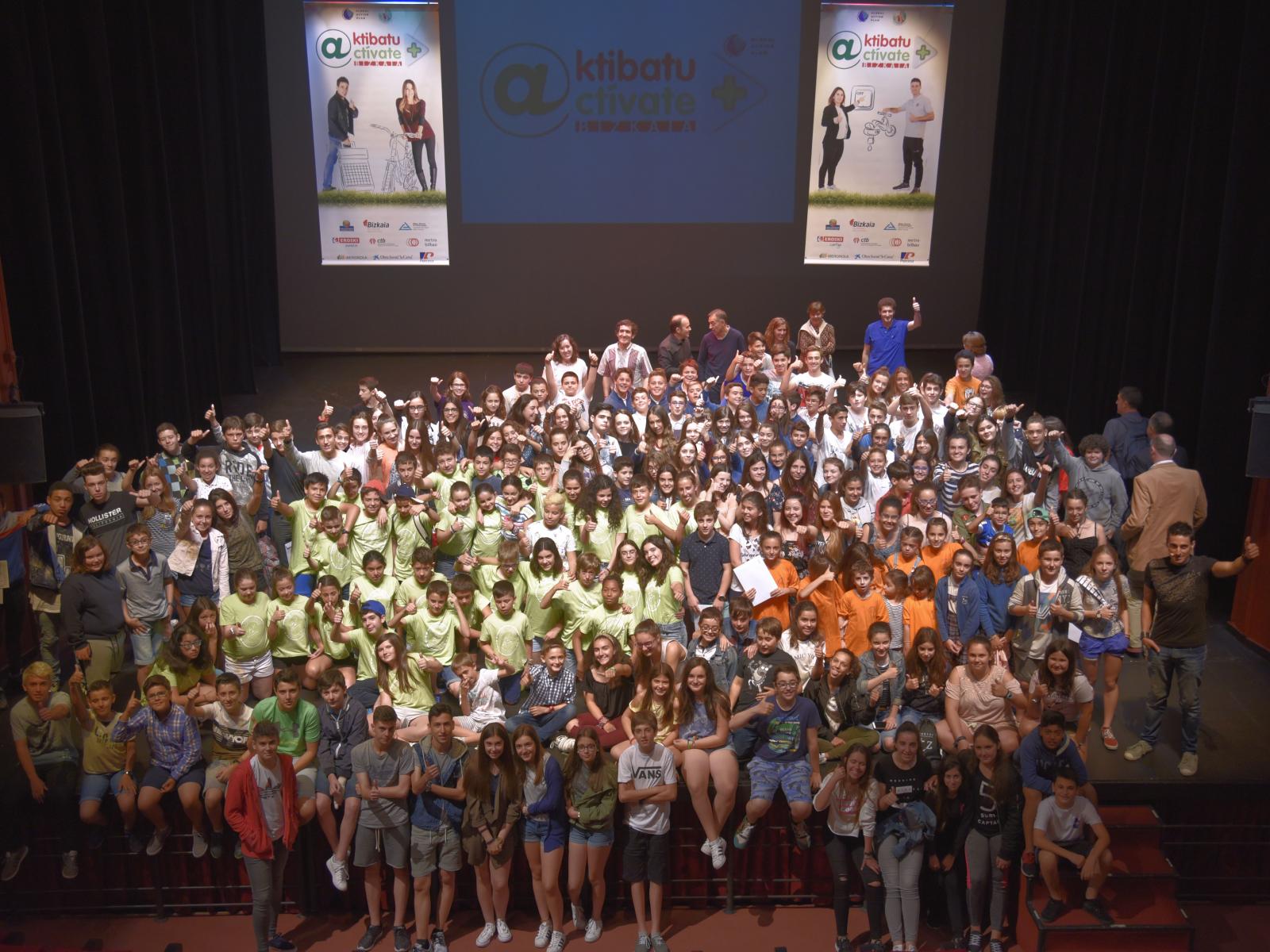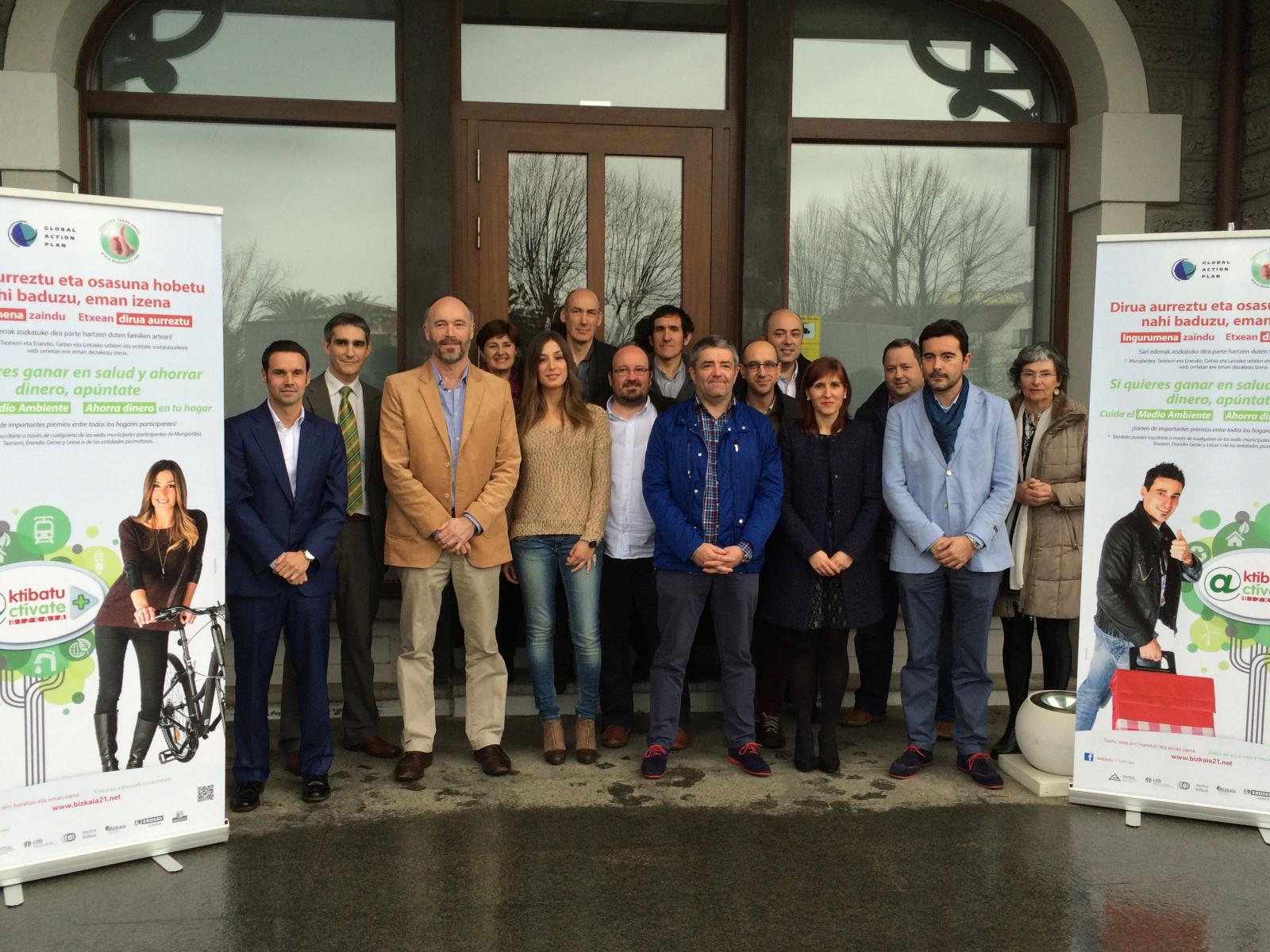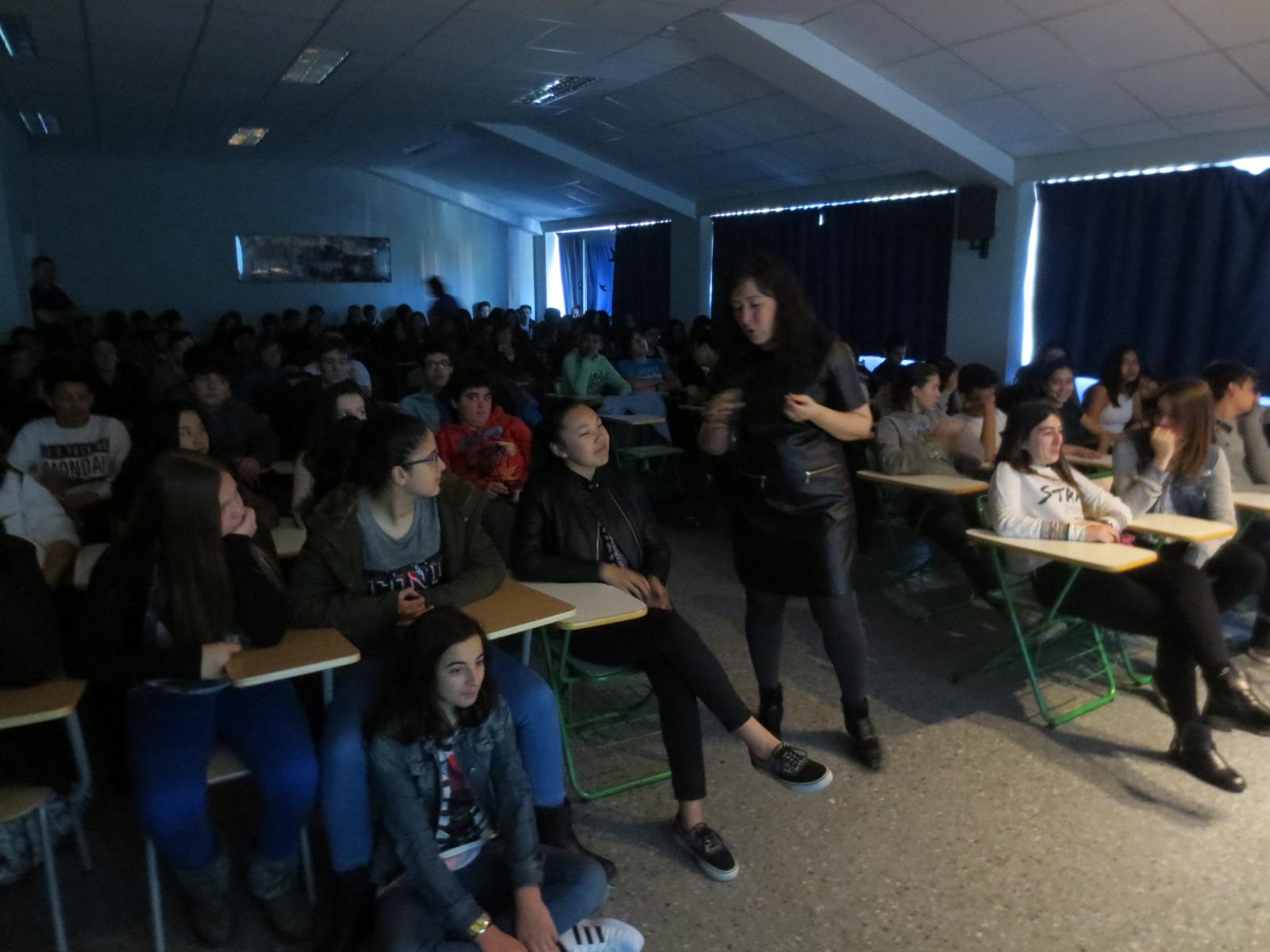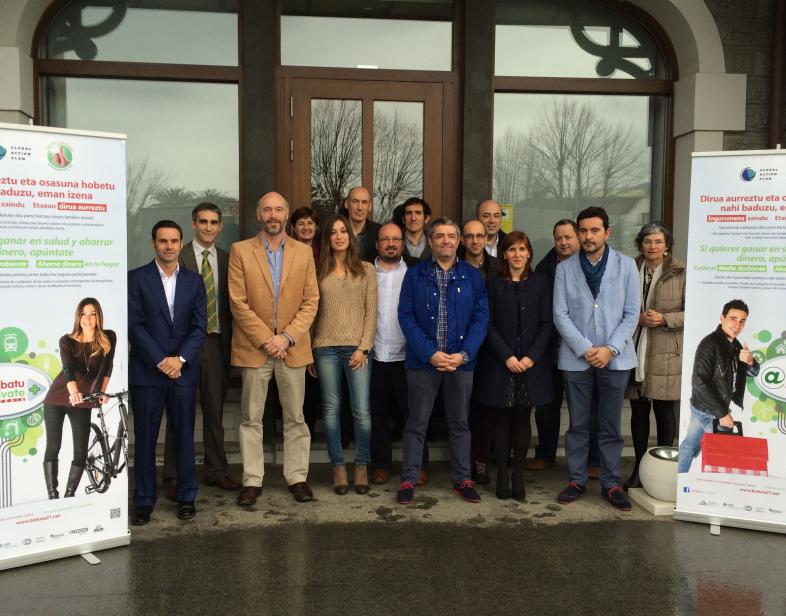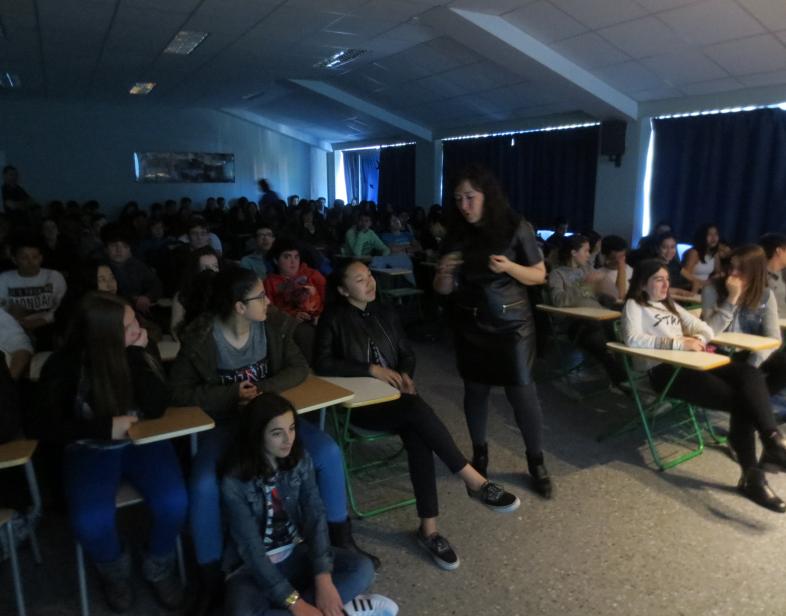An Overview Of Our Solution
Actívate+ is a program created to encourage behavioural change in a targeted community. It was developed by Global Action Plan (GAP España) for the Basque province of Bizkaia, in collaboration with the Diputación Foral Bizkaia DFB (provincial government) and 10 other public and private entities. These entities are major local “players” in the management of water, waste, energy, public transport, finance & consumerism. The program objective is to enable change in relation to the habits of citizens & students. Bizkaia is a province with 1,152,406 inhabitants and 112 municipalities and the program has been running for over 6 years, with the direct participation of 66 schools and more than 4,000 households. The name of the Activate+ program relates to the objective of converting these educational centres and households into active agents for change.
- Population Impacted: 1.152.406 people/4.154 households/ 57.400 students
- Continent: Europe
Context Analysis
In response to the major environmental challenges in the province of Bizkaia, the Bizkaia 21 (B21) program was created: a strategy for the sustainable development for the whole province. A key component of this strategy, initiated by the Bizkaia Department of Environment, has been the collaboration with the NGO Global Action Plan. The result of this initiative has been the creation of a program called Activate+ which was launched in 2012. The program principle objective has been to encourage the participation of the inhabitants of Bizkaia and to stimulate change in behavioural habits. The following is a selection of baseline data that reflect the initial situation in the province
Water consumption: 104 litres/individual/day
Waste production: 0.98 kg/ individual/day
Energy consumption: 5.996 Kw/ individual/day
Journeys using public transport: 0.38 journeys/ individual/day
Describe the technical solution you wanted the target audience to adopt
Activate+ is based on two GAP programs: reducing energy and waste in school buildings and minimizing daily negative habits in relation to water, energy and mobility using the household as the focal point. The implementation of these two programs has been carried out region by region, so that each year different municipalities have been involved.
To involve schools, the local education departments of the municipalities has offered the program via its communication channels with a final total of 66 schools participating (approximately 57,400 students).
To attract the local community, a specific program has been developed via a web platform where individual households that signed up have had access to a personalized page. To ensure the community was aware of the program, Actívate+ has offered the municipalities communication tools for local media & social media.
Type of intervention
Describe your behavioral intervention
In the schools, the program has focused on the behaviour of students, teachers and employees in relation to the use of energy and the management of school waste. In each school a group of students has been formed, whose first task was to analyse the initial situation, then to develop a communication campaign (for the whole school), implementing the campaign and then evaluating the results achieved. Overall savings in energy have averaged just over 16%
To involve households, the web platform has been offered firstly to the parents via the schools. Then the rest of the community was invited to participate in the program using communication facilities provided by the municipality. The program was kicked off by a press conference where the organizers outlined the program objectives. This resulted in 4.154 households registering in the household web platform.
To support the development of Actívate+ in each region, a series of talks have been arranged in local community centres and run by the public & private organizations that formed part of the Activate+ program. For example, Eroski (Mondragon co-operative supermarket chain) focused on food & consumption.
In addition Actívate+ celebrated an event called "Semana Verde" which formed part of Green Week 2018 and was one of the 45 initiatives chosen by the EU in Spain to highlight local activities, and the only one in the Basque Country. The 4 day event (20th to 23rd May) took place in Bilbao.
As needed, please explain the type of intervention in more detail
GAP programs are based on what we call a "spiral of change". The most important element is an emotional one. To change, the emotions need to be touched and once this has been achieved then information is provided and then a choice is offered. The program does not enforce a change but suggests one. The only rewards in this program are:
- Households: a draw for all participants with 3 modest prizes, e.g: a hamper of organic products (provided by one of the sponsors)
- Schools: GAP often uses a "celebration" at the end of programs - we encourage individuals & communities to experience their achievement.
Describe your implementation
For the implementation of Actívate+, 3 levels of action were taken into account:
- Analysis of the initial situation and development of contents: Together with the Diputación Foral Bizkaia and the rest of the partners, the action areas were chosen based on the environmental needs in Bizkaia. As a result, four work topics were established (energy and water consumption, mobility and responsible consumption) for homes, and two for schools (energy and waste).
- Campaign to attract participants: In this phase, GAP worked directly with the municipalities to use all available channels for disseminating the initiative and inviting the participation of households (local media, social media, talks, social networks, associations, etc.). In the case of schools, it was carried out through the Basque Government educational entity and local education authorities.
- Development of the Program: the local municipalities were involved throughout the process as they were the entities closest to the citizens. In the case of schools, direct contact was maintained with the teaching staff. GAP provided them with the necessary tools and knowledge to carry out the program. In the latter case.
The success factors of the program have been:
- The collaboration of public and private entities - The active participation of municipal entities
- The user friendly tools used in the program for households (web page) and schools (digital materials).
- System of continuous evaluation in the program for homes through the web
- Both the measurements and the communication campaigns in the school programs were designed and executed by the students themselves and which were exhibited during Green Week celebrated in Bilbao by Activate+.
- The final celebration that was held at the end of each phase in which the participating schools and the representation of the municipal authorities and partners were all present.
External connections
For the development of Actívate+, collaborative work has been carried out by the public and private entities that financed the program. Both by actively participating in the development of the actions, through presentations to the population and school children in the regions as well as internal dissemination via their stakeholders (clients, users, etc.).
The list of participating entities are:
• Diputación Foral Bizkaia - DFB (Provincial government body)
• Basque Government (Regional government body)
• Basque Energy Organization (attached to the Basque Government, the entity in charge of promoting energy efficiency for citizens and companies)
• Garbiker (attached to DFB, the entity in charge of waste management in the province)
• Bilbao Bizkaia Water Consortium (entity in charge of water management in the province)
• Transport Consortium of Bizkaia - CTB (entity in charge of coordinating public transport in the province)
• La Caixa Social Work (one of the largest Bank foundations in Spain)
• Grupo Eroski (Supermarket chain that is part of the Mondragón Cooperative)
• Iberdrola (electricity production, distribution and marketing company)
• Metro Bilbao (Public transport of the metropolitan area of Bilbao)
• Petronor (Petroleum Company)
Who adopted the desired behaviors and to what degree?
In the case of schools, groups of students made actual measurements, for example: the decrease in energy consumption, studying the
changes in behaviour of people in relation to the use of equipment, comparing the data of the electricity
meters (electricity consumption at the beginning of the program and at the end). Audits carried out by the teams, resulted in the following achievements:
- Decrease in energy consumption - 16.8%
- Shutdown of equipment after use, % improvement of: Computers 39% / Monitors 33% / Printers 12% / Laptops 36%
In the homes, questionnaires were completed by the participants before the program began and at the end of the program and according to the estimates made based on the answers given to their changes in behaviour habits, the results were:
- Saving energy consumption: 2.8%
- Water consumption savings: 4.7%
- Decrease in waste production: 3.1%
- Decrease CO2 emissions relating to mobility: 1.5%
How did you impact natural resource use and greenhouse gas emissions?
Actívate+ has had a direct impact on reducing greenhouse gases in the consumption of electricity of schools. Students compared the consumption of electricity, measured directly via the meters at the beginning of the school year and at the end. calculating the average weekly consumption, before starting the program and at the end of the school year. To obtain the final savings data, the change in the hours of insolation and the difference in temperature were taken into account. The CO2 savings achieved was 69.3 metric tons.
In the case of households, the impacts on the decrease in the consumption of resources were measured through estimates of what the behavioural changes acquired implied. The estimates made were:
Annual water consumption savings - 21,900 m3
Decrease in fuel consumption (mobility) - 9.2 equivalent tons of oil
Decrease in waste production - 131,000 kg.
What were some of the resulting co-benefits?
Actívate+ has been an invaluable instrument of social activation as outlined in the Bizkaia 21 strategy, which has understood the need for citizen participation. The result of impacting on over 57,000 schoolchildren in the 112 municipalities of the province has been remarkable. Students have become active agents of change in favour of sustainability, schools' management replaced equipment to support these changes (energy efficiency, selective collection, fair trade purchase) and recycled material, etc.
In homes, the acquired behaviour changes have resulted in saving water and energy in the province, as well as in reducing the ecological footprint by reducing the purchase of products and the production of waste. It has also had a positive effect on the decrease in the use of private vehicles by increasing travel by public transport.
Sustainability
The Actívate+ program has relied on a combination of private & public funding. The model is very simple in its design and is thus easily replicable:
- Implication of a lead government institution (In Bizkaia, the provincial government DFB)
- Mix of private & public entities who each have contributed a modest sum of EUR 10.000
The running cost of the program has been based on one full time employee, with other tasks subcontracted (IT, design, etc.). In general terms: 33% staff, 33% communication and 34% other costs (subcontracting, web platform, etc.)
The participating entities are very satisfied, so much so that the project has been rolled out for another 3 years, with the same entities supporting the new phase.
Return on investment
The return on investment as mentioned above has been calculated by specific environmental savings and, equally important, by the media impact of the program. In other words, an annual investment of EUR 10.000 has produced the environmental savings quantified, and the publicity generated over a 6 month period has been intense at the local level, obviously seen as a positive return by each entity
How could we successfully replicate this solution elsewhere?
The project is easily replicable. The central IT instrument of the web platform is already running in different countries via the GAP network and can be adaptable to new environments or geographical areas. The platform only requires personalized support in terms of translating materials and providing basic training to one management position and one staff member. This training could be given over three days. The main investments in terms of creating the platform, the evaluation tools and the communication materials have already been made and have demonstrated their success in different environments, like schools and households. The changes in behavior are sustainable and long-lasting in terms of saving resources and therefore the program requires an initial investment to generate such changes, but is not required to maintain them in the longer term.
